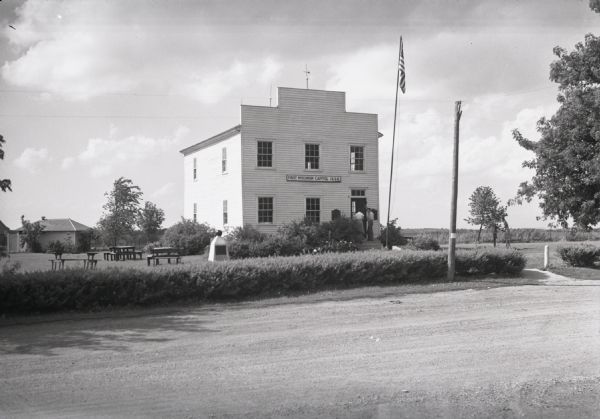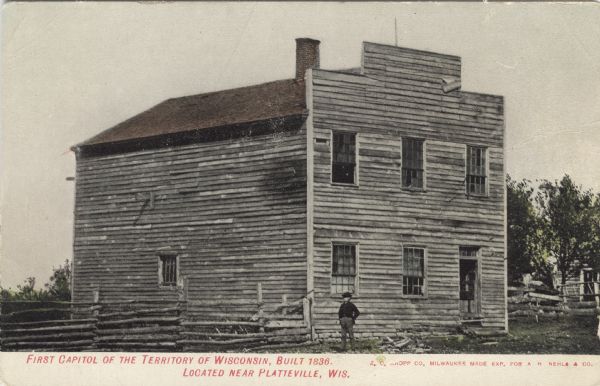
Our History
HISTORY OF FIRST CAPITOL
Wisconsin’s path to statehood had its start in the gently rolling landscape of the state’s far southwestern corner, in a town now mostly forgotten to time.

Belmont, the Birthplace of Wisconsin Territorial Government
The First Capitol Historic Site lies a mile or two northwest of the small village of Belmont. This is where the first territorial legislature established Wisconsin’s territorial government. These lawmakers, huddled in the cold during the fall and winter of 1836, built the framework that would evolve into the state of Wisconsin 12 years later. They met from October 25 to December 9, 1836. In that time, they put 42 laws on the books, established a judicial system, called for roads and railroads, and – most significantly – established Madison as the permanent capital city.

Capitol Relocation Affects Belmont’s Livelihood
Establishing Madison as the capital city had a profound and immediate impact on the Belmont community, as numerous people and several businesses left the area. The declining town maintained a post office and several other businesses until 1867, when residents set up a new town to the south, along the railroad tracks. This new community took on the Belmont name, and the older town came to be known as Grandview. In 1884, the Chicago and Northwestern Railroad established a station north of Grandview. This small community was named Leslie.

Meanwhile….
In 1837, construction began on the new Madison capitol. This would become the permanent location of the Wisconsin Government.
Illustration of second capitol building,1850 – WHI #34370

First Capitol Buildings Become a Historic Site
The First Capitol site features two buildings that were used during the 1836 territorial legislative session. The first was the Council House, where the legislators met to conduct official business. The second building was a lodging house for the legislators. Both structures were eventually used as residences – the lodging house becoming the residence of territorial Supreme Court Chief Justice Charles Dunn. Both were later converted to livestock barns.
In 1910, the Wisconsin Federation of Women’s Clubs began raising funds for the restoration of the buildings. The Council House was moved to its current site in 1924 and restored. In 1956, the lodging house was moved to the site and restored. During this time it was operated by the Department of Natural Resources. In 1994 the site became part of the Wisconsin Historical Society.
More History
Learn more about the history of First Capitol and the early Wisconsin Government by exploring the collections and archives at the Wisconsin Historical Society.
Images of History






